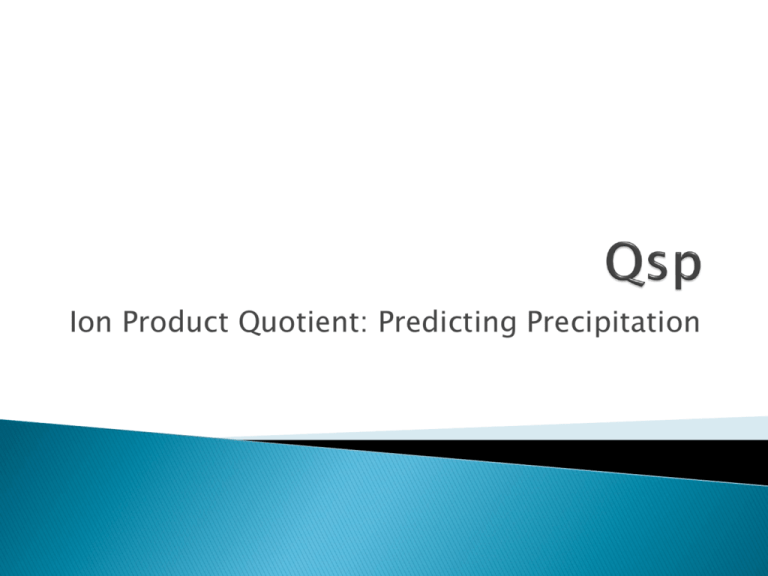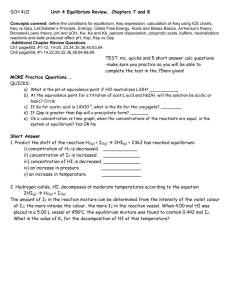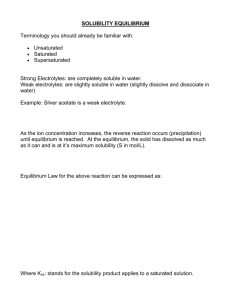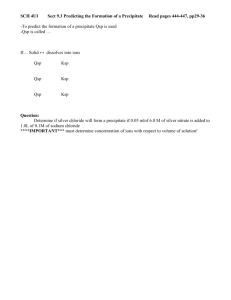Ion Product Quotient (Qsp): Predicting Precipitation
advertisement

Ion Product Quotient: Predicting Precipitation The higher the Ksp value, the more soluble the compound Solubility ◦ Of a substance is the maximum concentration a substance can have in water to make a saturated solution. Once the concentration exceeds the solubility, it will accumulate at the bottom of the mixture as a precipitate (supersaturation). Every time we look at a solution in equilibrium, we are dealing with a saturated solution. Most substances, even ‘insoluble’ substance will dissolve to some degree. When two solutions are mixed together the system will try to reach equilibrium. Ksp is the equilibrium expression used when a solution is saturated When the solution is not saturated, Qsp is usually used to describe the equilibrium ◦ You can think of Qsp as a ‘trail Ksp’ ◦ Q has the same form as K, but typically involves non-equilibrium concentrations Once the Qsp is calculated, we compare it to the actual Ksp for the substance. ◦ Precipitation can be predicted by comparing Qsp and Ksp We will get one of 3 situations: A precipitate will form. ◦ This means that the solution looks at the trial situation and says that there are too many ions for that specific temperature. It will kick the ions out as precipitates. Saturated salt will precipitate until Qsp = Ksp A saturated solution has formed. There is the perfect amount of ions present. No more salt can dissolve. Solution is at equilibrium No precipitate forms. An unsaturated solution has formed. More salt can dissolve without a precipitate forming This means that there is no precipitate that forms and there is room for more ions. One other necessary discussion is that if I mix two substances together, they dilute each other. This dilution must be considered when deciding on whether a precipitate will form. 1. Decide if any possible precipitates can form from the two substances being mixed using a solubility table. ◦ Write the net ionic equation for this substance to determine what the trial Qsp expression is. 2. Calculate the dilution of both ions that will form the precipitate. ◦ Note that the final volume will be the sum of the volumes of both substances. 3. Using the concentrations above, calculate the trial Qsp 4. Compare to the actual Ksp to determine whether a precipitate will form. 25.0 mL of 0.00200 M of potassium chromate are mixed with 75.0 mL of 0.000125 M of lead (II) nitrate. Will a precipitate form if Ksp of lead (II) chromate is 1.8 x 10-14?







